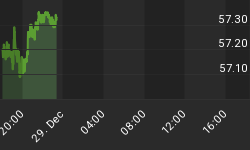While small beer compared to the U.S.’s trade war with China, the growing dispute between Washington and Brussels over subsidies by aircraft makers is likely to develop into an escalating series of tit-for-tat measures this year.
That’s particularly true if President Donald Trump feels he needs some headline-grabbing opportunities ahead of the presidential elections Nov. 3.
American jobs are often seen a surefire winner in an election year — there is little to be lost from looking like a tough negotiator and following through on threats.
On June 24, the U.S. Trade Representative’s office published a list of European products that could be subject to new tariffs as early as August, the research analysts Stratfor wrote recently.
The $4.3 billion worth of products in this round of threats are said to include olives, chocolate and gin from countries such as France, Germany, Spain, and the United Kingdom — so, hardly strategic products.
But the move marks the latest escalation of a 16-year dispute between Washington and Brussels over government subsidies to the U.S.-based aircraft maker Boeing and its chief European rival, Airbus.
The rights and wrongs of the claims and counterclaims aside, the dispute holds the risk of escalating into something more serious. The current administration has threatened on previous occasions to levy a 25% import duty on European cars in retaliation for, among other things, a perceived disparity between E.U. and U.S. import taxes. Related: How Are Low Car Sales Impacting The Metals Market?
The U.S. imposes a 2.5% tariff on cars assembled in Europe and a 25% tariff on European-built vans and pickup trucks. Europe, on the other hand, imposes a 10% tariff on U.S.-built cars and trucks.
In reality, this is more equitable than it sounds: demand for cars and sedans in the U.S. is not the same as it is in Europe. The lucrative sector of the U.S. market is vans and trucks, which the Europeans are locked out of by the high tariff which has been in place since the 1960s.
Nevertheless, the automotive trade balance is one the U.S. administration has frequently threatened to take action on in previous spats and could revisit in this one, safe in the knowledge the U.S. exports few vehicles to Europe but the Europeans export quite a lot of high-end luxury cars to the U.S.
In counter to the U.S. proposals on the airplane maker-related tariffs, the E.U. is set to move forward with tariffs on $11.2 billion of U.S. imports, likely sometime in the early fall and chiefly in retaliation for the tit-for-tat over aircraft subsidies. Adding fuel to the fire are European plans to impose digital services taxes on tech companies like Amazon and Google, who pay minimal tax in Europe but generate vast sales. The U.S. feels this unfairly penalizes U.S. firms, refusing to see the issue is not that the companies are based in the U.S. but rather that they are based outside of Europe and, therefore, exempt from the same taxes as European competitors.
The total amount of goods involved this year is unlikely to top $100 billion, just 25% of the $400 billion caught up in U.S.-China trade disputes.
But that doesn’t mean it is not of concern.
If products and services relevant to your market segment get caught up in the dispute, then the sudden imposition of tariffs, quotas, or duties could disrupt business.
Next on the horizon is a possible Trump reaction to a European travel ban on American citizens. According to Bloomberg this week, E.U. governments are poised to extend a travel ban for U.S. residents for at least two weeks, while at the same time opening up travel for Chinese citizens, as infection rates rise in the former and fall in the latter — that won’t go down well in the White House.
By AG Metal Miner
More Top Reads From Safehaven.com:

















